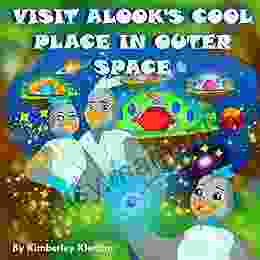A Comprehensive Guide to Working Effectively with Children and Young People

Working with children and young people can be an immensely rewarding experience, but it also requires a unique set of skills and responsibilities. Whether you're an educator, healthcare professional, youth worker, or parent, understanding the developmental needs and challenges faced by children and young people is essential for creating a positive and supportive environment. This guide will provide you with the practical tools and insights you need to work effectively with this vulnerable population.
Understanding Child and Youth Development
To work effectively with children and young people, it is important to have a solid understanding of their developmental trajectory. Each stage of development brings with it its own set of challenges and opportunities, and it is important to be aware of these in order to provide appropriate support.
4.4 out of 5
| Language | : | English |
| File size | : | 110257 KB |
| Text-to-Speech | : | Enabled |
| Enhanced typesetting | : | Enabled |
| Word Wise | : | Enabled |
| Print length | : | 405 pages |
| Screen Reader | : | Supported |
Infancy (0-1 years): Infants are rapidly developing both physically and cognitively. They are learning to trust the people around them, forming attachments, and beginning to explore their surroundings. It is important to provide infants with a safe, loving, and stimulating environment that supports their development.
Toddlerhood (1-3 years): Toddlers are becoming more independent and exploring their surroundings with newfound mobility. They are also beginning to develop language skills and a sense of self. It is important to provide toddlers with opportunities to play, explore, and learn, while also setting limits and boundaries to help them develop self-control.
Preschool (3-5 years): Preschoolers are becoming more social and developing their cognitive skills. They are learning to interact with others, share, and follow rules. It is important to provide preschoolers with opportunities to play, learn, and interact with other children, while also fostering their independence and self-esteem.
School Age (6-12 years): School-age children are becoming more independent and developing their academic and social skills. They are learning to read, write, and solve problems, and they are also developing friendships and forming their own identities. It is important to provide school-age children with opportunities to learn, grow, and develop their social skills, while also supporting their emotional well-being.
Adolescence (13-18 years): Adolescence is a time of rapid physical, cognitive, and emotional change. Adolescents are becoming more independent and developing their own sense of identity. They are also facing new challenges, such as peer pressure, academic stress, and relationship issues. It is important to provide adolescents with opportunities to explore their interests, develop their talents, and build strong relationships, while also supporting their emotional well-being.
Effective Communication and Relationship Building
Building strong relationships with children and young people is essential for creating a positive and supportive environment. Here are some tips for effective communication and relationship building:
- Be respectful and listen attentively: Children and young people need to feel respected and heard. When communicating with them, be patient, listen attentively, and show that you value their opinions.
- Be honest and authentic: Children and young people can tell when you're being fake, so be honest and authentic in your interactions with them. Avoid using jargon or condescending language, and be genuine in your interest in what they have to say.
- Set clear and reasonable expectations: Children and young people need to know what is expected of them. Set clear and reasonable expectations, and be consistent in your expectations. Avoid being overly critical or demanding, and focus on providing positive reinforcement.
- Be a positive role model: Children and young people learn by watching the adults in their lives. Be a positive role model by demonstrating respectful behavior, empathy, and responsibility.
- Build trust: Trust is the foundation of a strong relationship. Build trust by being reliable, consistent, and honest. Avoid breaking promises or making threats that you can't keep.
Supporting Children and Young People with Challenges
Every child and young person is unique, and some may face challenges that require additional support. Here are some tips for supporting children and young people with challenges:
- Be aware of the challenges they face: The first step to supporting children and young people with challenges is to be aware of the challenges they face. This includes understanding their developmental needs, any disabilities or health conditions they may have, and any social or economic factors that may be affecting them.
- Provide a safe and supportive environment: Children and young people need to feel safe and supported in order to thrive. Provide them with a safe and supportive environment where they can feel comfortable talking about their challenges and seeking help.
- Offer opportunities for success: Children and young people with challenges need opportunities to succeed. Offer them opportunities to participate in activities that they enjoy and that they can be successful at. This will help them build confidence and self-esteem.
- Connect them with resources: There are many resources available to help children and young people with challenges. Connect them with resources such as therapy, counseling, support groups, and educational services.
- Be patient and understanding: It takes time and effort to overcome challenges. Be patient and understanding with children and young people as they work to overcome their challenges.
Working with children and young people is a complex and challenging but also immensely rewarding profession. By understanding their developmental needs, building strong relationships, and supporting them through challenges, you can help them reach their full potential and make a positive impact on their lives.
Remember, every child and young person is unique and deserves to be treated with respect and dignity. By working together, we can create a world where all children and young people can thrive.
4.4 out of 5
| Language | : | English |
| File size | : | 110257 KB |
| Text-to-Speech | : | Enabled |
| Enhanced typesetting | : | Enabled |
| Word Wise | : | Enabled |
| Print length | : | 405 pages |
| Screen Reader | : | Supported |
Do you want to contribute by writing guest posts on this blog?
Please contact us and send us a resume of previous articles that you have written.
 Top Book
Top Book Novel
Novel Fiction
Fiction Nonfiction
Nonfiction Literature
Literature Paperback
Paperback Hardcover
Hardcover E-book
E-book Audiobook
Audiobook Bestseller
Bestseller Classic
Classic Mystery
Mystery Thriller
Thriller Romance
Romance Fantasy
Fantasy Science Fiction
Science Fiction Biography
Biography Memoir
Memoir Autobiography
Autobiography Poetry
Poetry Drama
Drama Historical Fiction
Historical Fiction Self-help
Self-help Young Adult
Young Adult Childrens Books
Childrens Books Graphic Novel
Graphic Novel Anthology
Anthology Series
Series Encyclopedia
Encyclopedia Reference
Reference Guidebook
Guidebook Textbook
Textbook Workbook
Workbook Journal
Journal Diary
Diary Manuscript
Manuscript Folio
Folio Pulp Fiction
Pulp Fiction Short Stories
Short Stories Fairy Tales
Fairy Tales Fables
Fables Mythology
Mythology Philosophy
Philosophy Religion
Religion Spirituality
Spirituality Essays
Essays Critique
Critique Commentary
Commentary Glossary
Glossary Bibliography
Bibliography Index
Index Table of Contents
Table of Contents Preface
Preface Introduction
Introduction Foreword
Foreword Afterword
Afterword Appendices
Appendices Annotations
Annotations Footnotes
Footnotes Epilogue
Epilogue Prologue
Prologue Nikki Rose
Nikki Rose Ellen Seltz
Ellen Seltz Sonia Pilcer
Sonia Pilcer D C Robinson
D C Robinson Rj Reyes
Rj Reyes Vanessa Nelson
Vanessa Nelson Erica Layne
Erica Layne Mark Condon
Mark Condon Bob Hicok
Bob Hicok Juergen Pintaske
Juergen Pintaske Larry Knipfing
Larry Knipfing Susan Isaacs
Susan Isaacs J M Snyder
J M Snyder Patricia Mclinn
Patricia Mclinn Meghan Davis
Meghan Davis Max Mills
Max Mills Hannie P Scott
Hannie P Scott Cullen Bunn
Cullen Bunn Anita Diamant
Anita Diamant Marine Freibrun
Marine Freibrun
Light bulbAdvertise smarter! Our strategic ad space ensures maximum exposure. Reserve your spot today!
 Rudyard KiplingFollow ·2.4k
Rudyard KiplingFollow ·2.4k Gus HayesFollow ·14.1k
Gus HayesFollow ·14.1k Milton BellFollow ·8k
Milton BellFollow ·8k Garrett PowellFollow ·13.3k
Garrett PowellFollow ·13.3k Hector BlairFollow ·7.7k
Hector BlairFollow ·7.7k Isaac MitchellFollow ·10.3k
Isaac MitchellFollow ·10.3k Neil GaimanFollow ·9.2k
Neil GaimanFollow ·9.2k James JoyceFollow ·12.6k
James JoyceFollow ·12.6k

 Roland Hayes
Roland HayesFive Unique Eating Plans to Shatter Your Weight Loss...
Weight loss journeys can be a rollercoaster...

 Gustavo Cox
Gustavo CoxThe Small Habits Revolution: How Tiny Changes Can...
Are you ready to...

 Herman Mitchell
Herman MitchellVisit Alook Cool Place In Outer Space Let Explore The...
Welcome to the World Series...

 Hassan Cox
Hassan CoxGaunt's Ghosts Omnibus: A Comprehensive Guide to the Epic...
Prepare to embark on an...
4.4 out of 5
| Language | : | English |
| File size | : | 110257 KB |
| Text-to-Speech | : | Enabled |
| Enhanced typesetting | : | Enabled |
| Word Wise | : | Enabled |
| Print length | : | 405 pages |
| Screen Reader | : | Supported |















